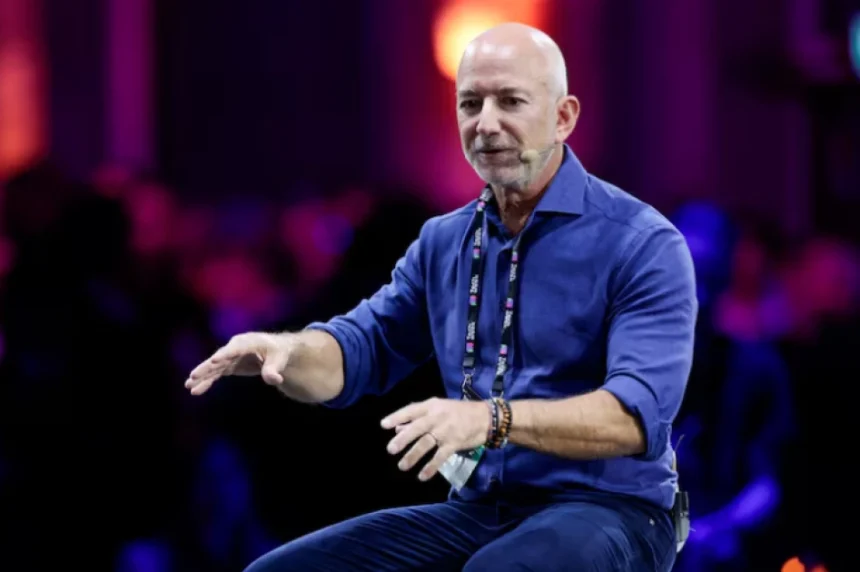The relentless growth of artificial intelligence, cloud computing, and our global digital economy is pushing terrestrial infrastructure to its breaking point. Data centers, the unsung engines of the internet, are voracious consumers of energy and water for cooling, often drawing the ire of local communities and environmentalists. In a characteristically audacious move, Jeff Bezos believes he has found a solution: instead of building more data centers on Earth, we should launch them into space.
Through his aerospace company, Blue Origin, Bezos is actively exploring the feasibility of orbital data centers. This isn’t merely science fiction; it’s a direct response to a critical bottleneck in technological progress. The concept aims to leverage the unique environment of space to solve two of the biggest problems facing the industry: massive energy consumption and the immense heat generated by computing hardware.
How Would a Space-Based Data Center Actually Work?
The vision involves placing modular, self-contained data center units in Low Earth Orbit (LEO). These units would be powered virtually limitlessly by large solar arrays, unencumbered by cloud cover or night cycles. The most significant advantage, however, lies in cooling. The vacuum of space is a near-perfect heat sink. Without an atmosphere, heat can be dissipated far more efficiently through radiation than is possible on Earth with air conditioning and water cooling towers. This could drastically reduce the energy overhead dedicated solely to cooling.
Amazon Web Services (AWS), Bezos’s cloud computing giant, is already deeply invested in the underlying architecture. Their AWS Aerospace and Satellite Solutions division provides the cloud infrastructure for countless space missions, and Project Kuiper, Amazon’s satellite internet venture, is building a massive low-earth orbit constellation. A space data center would be the ultimate convergence of these ventures, acting as a powerful, orbital node that processes data in space and beams down only the refined results to Earth.
The Staggering Benefits and Daunting Challenges
Potential Benefits:
-
Unlimited, Clean Energy: With vast solar panels, these facilities could be powered entirely by renewable energy, eliminating their grid-based carbon footprint.
-
Revolutionary Cooling: Radiative cooling in space is inherently more efficient, potentially allowing for higher-density, more powerful computing without thermal throttling.
-
Reduced Latency for Orbital Services: Data for Earth observation, satellite communications, and future space stations could be processed in orbit, avoiding the delay of sending it hundreds of miles to and from Earth.
-
Land Use and Community Relations: Moving this infrastructure off-planet frees up land and alleviates local strains on power grids and water resources.
Significant Hurdles:
-
The Astronomical Cost of Launch: While Blue Origin’s rockets aim to lower launch costs, ferrying the massive amount of hardware required for a single data center would be phenomenally expensive.
-
Maintenance and Repairs: A hard drive failure on Earth is a simple swap. A failure in orbit requires a complex, risky, and incredibly expensive spacewalk or robotic repair mission.
-
Space Debris and Reliability: Orbital infrastructure is vulnerable to micrometeoroid impacts and the growing cloud of space junk. Redundancy and shielding would be critical, adding mass and cost.
-
Data Transmission Security and Bandwidth: Securing a constant, high-bandwidth laser or radio link to transmit terabytes of data through the atmosphere without interruption is a monumental challenge.
The Bottom Line: A Long-Term Vision for a Post-Earth Internet
Jeff Bezos’s proposition is not for the next decade, but likely for the middle of the century. It is a vision that aligns perfectly with his long-stated belief in a future where millions of people live and work in space. Orbital data centers would be critical infrastructure for that future civilization.
While the technical and economic barriers are currently immense, the concept forces a necessary conversation about the unsustainable trajectory of our digital growth. By looking to the stars for solutions, Bezos is not just thinking about the next iteration of AWS; he is sketching the blueprint for an interplanetary internet, positioning Blue Origin and Amazon at the center of humanity’s next giant leap into the cosmos. The race to build the cloud is officially over. The race to build the exo-cloud has just begun.








